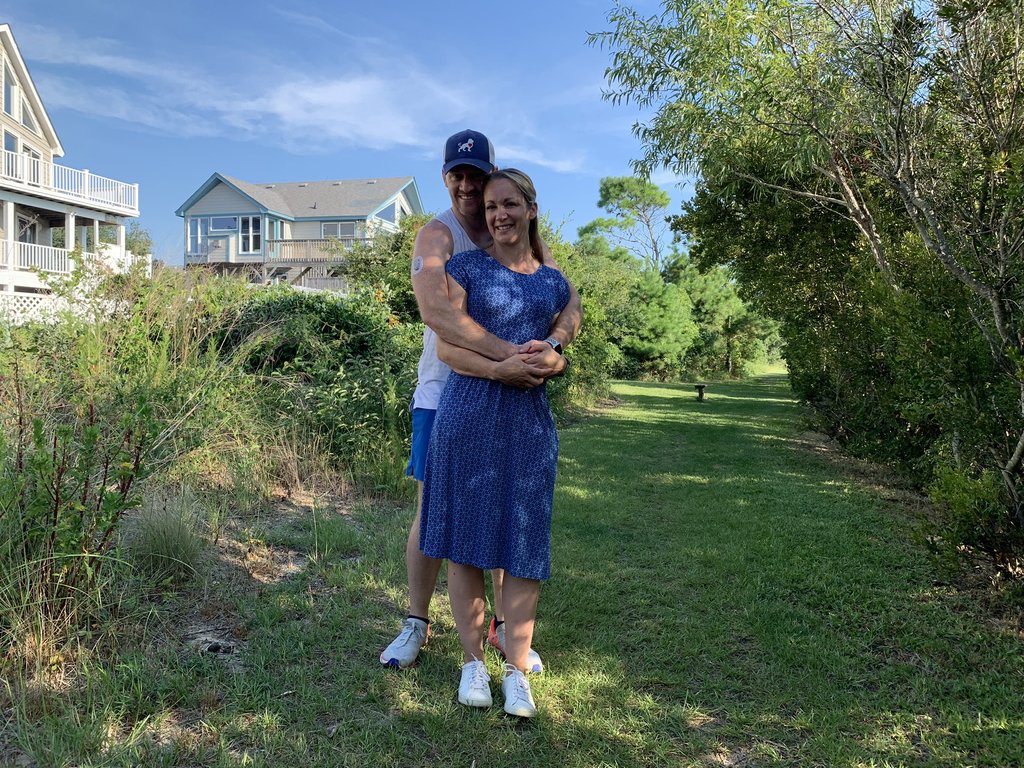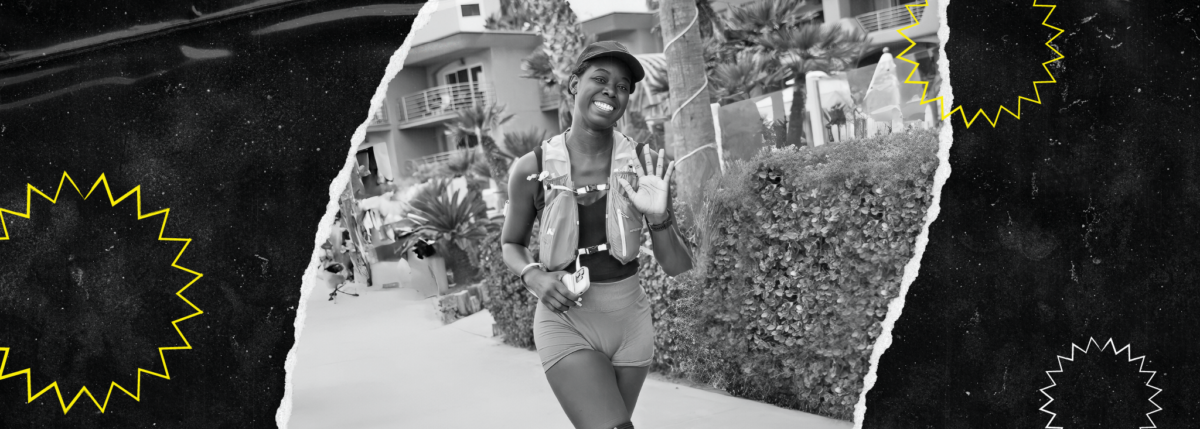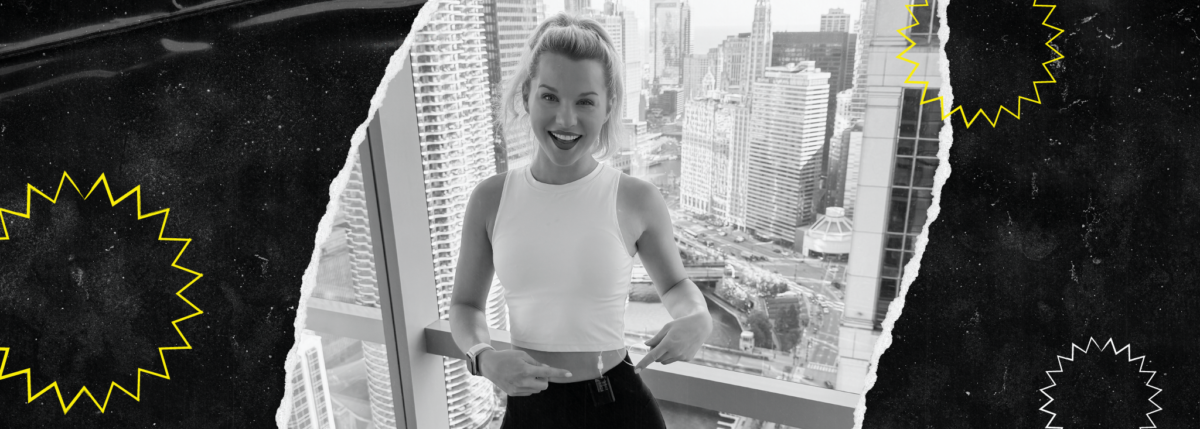Leading By Example: Q+A with Marathon Captain Nate Checketts
Written by: Nate Checketts
5 minute read
September 9, 2019
Nate is the co-founder and CEO of Rhone, and a co-captain of the 2019 Beyond Type Run team running the TCS New York City Marathon. Beyond Type Run is sponsored by Rhone, as well as lead sponsors Dexcom and Tandem Diabetes Care.
This post also appears on Rhone’s blog, the Pursuit.
BT1: Can you talk about your decision to join the Beyond Type Run marathon team?
Nate: I had run a marathon before and unlike many people who run marathons, I did not have that experience where right at the finish line I thought, ‘Oh, I can’t wait to run another one,’ or ‘I’m hooked!’ I remember distinctly thinking, ‘Okay, I checked the box, I feel like I’ve hit this milestone in life and now I can go try and check something else off of my bucket list.’ And I stopped running for probably three months. I still exercised, but I didn’t go for any kind of distance run for probably a period of three months.
And so when I saw the Beyond Type 1 team was doing a marathon, it was probably a year after I had run my first one, I thought, ‘If I’m ever going to run another one, it would be for something like this.’ The opportunity to give back and raise awareness is something that I’m extremely excited to do and I want to double the amount that’s required to be raised.
What does your training regimen look like?
Running is a little bit of my fitness routine anyways—I generally run 2 to 3 miles in a week’s time. What I’ve done is converted to a plan where I tend to exercise five days, three of those days are running-focused days and then the other two are much more mobility and recovery. So I try and practice yoga once a week and then will generally do a HIIT-based routine (High Intensity Interval Training.) So on the running days, I like to start my week and get the long run over with because I don’t like it to be looming over me. Even though I am running a marathon, it’s hard to convince people that I don’t consider myself to be a runner, I was always a sprinter but long distance I don’t think I have any slow-twitch muscle fibers in my body. It’s hard for me to convince myself to do that long run, so I do it right at the beginning of the week and then sprint work in the middle of the week and then recover at the end of the week.
 How do you find the time to train while continuing on as CEO of Rhone, Chairman of the Board of Directors at Beyond Type 1, and raising your kids?
How do you find the time to train while continuing on as CEO of Rhone, Chairman of the Board of Directors at Beyond Type 1, and raising your kids?
It can be difficult! It really equates to me trying to be disciplined to go to bed early and then just wake up really, really early because otherwise, if I get into the routine of the day, it’s almost impossible for me to get my fitness in. But if I can start at 4:30 a.m. – 5:00 a.m. in the morning, then I’m generally getting it done before the kids wake up and before the day starts. But I’m also incredibly lucky and fortunate to be surrounded by just so many great people supporting me. My wife, at the top of that list, is just amazing, always making sure that she’s encouraging me to get out the door and making sure that I have time. And I have an amazing assistant, I’ve got a really great leadership team that is helping pick up the slack as I’m spending extra time doing this because what I would say is I’m not necessarily working out more days than I was previously, but it takes a lot more time because these long runs can be 90 minute to two-hour sessions.
Have you had any frightening diabetes-related moments while training?
I went out for an 11-mile run recently. My blood sugars were high, they were like 190 before I started and so I gave myself a unit of insulin, which for me is generally a 50 mg offset. So I thought, ‘This will be perfect, I’ll kind of drop as I run, maybe I’ll drop a little bit more but I’ve got two honey sticks with me, which are about 10 g of carbs each.” Four miles in, my blood sugar started to drop. And I was so confident because I hadn’t had lows for a while that I decided to do this 11-mile loop. I didn’t want to get tired of doing the same thing over and over again. So I took the first honey stick, got six miles in and was still dropping. I took the second honey stick and was about five miles away from my house. So I was tracking it and I got down into the 50s before I got back to my house and downed that Gatorade.
You start going through the scenarios in those moments: Do I call and wake up my wife to come and pick me up? Then she’s got to wake the kids up and it seems like such an obvious thing, and of course if there’s an emergency you would do that, but when you deal with diabetes day in and day out, you just don’t want to be a nuisance, you don’t want to be a bother, you don’t want it to interrupt anyone else’s day. And so maybe that was not the right decision in hindsight but I just decided to push through it. I had read the diagnosis story of Dave, who was the marathon captain last year—he wrote about how sprinting can actually stabilize your blood sugar. So I started picking up my speed to try and stabilize my blood sugar. That was a scary moment.
 What is your favorite diabetes device?
What is your favorite diabetes device?
I feel like I jumped into the 21st century when I started working with Dexcom because with every other continuous glucose monitor (CGM) that I had tried before, the information was so delayed, you were kind of trying to anticipate where you were going and you would end up doing arguably just as many finger sticks as you would without a CGM, never quite sure if the data was trustworthy. But with Dexcom, it’s painless application, you can put it in different places, it lasts 10 days, you don’t have to worry about charging the transmitter before putting it in. It is so much better than every other CGM that I’ve worked with that it gave me the confidence to be able to go back to injections because I never would have trusted myself to do injections with a less than accurate CGM. It’s funny because I never thought I would be excited about diabetes equipment but it’s a massive game-changer.
What does being a marathon team captain mean to you?
I think I have always been surrounded by great leaders and admired how somebody can impact a community or a group of people to bring out the best in themselves. I’m certainly not perfect at it; something that I aspire to do is to learn from great leaders and study leadership, but I think it’s really about leading by example and inspiring people to do their absolute best. I’ve got room to grow in my capacity as a leader for the Beyond Type Run team, but it’s about encouraging each other because marathon training is really, really hard. It’s about challenging yourself to get out of bed when you’ve been waking up in the middle of the night, encountering lows and highs, and your profile isn’t exactly what you want it to be from a blood sugar perspective.
What is it like to be a part of this community of runners with Type 1 diabetes?
It makes me emotional to even think about it because diabetes is such an isolating disease, or at least it has been for me. I come from a very large extended family, I have over 60 first cousins, and nobody within my extended family has it. None of my co-workers have ever had it. I’ve always been the only person in my direct ecosystem, my local church congregation, et cetera that has it and it feels really isolating because you’re almost putting on this façade.
And the thing that you can’t explain it to people, what it’s like to have it be Christmas or a birthday and you still have to wake up and test your blood sugar, you never get a moment off. I don’t think people can understand that unless they experience it for themselves. So when you see somebody else with a Dexcom patch on or a cable coming out from their pump, it’s like ‘Oh my gosh, I’m not alone!’ I just want to hug those people. It’s this sense of relief. On top of that, for me being diagnosed as an adult, when I see kids with diabetes, I just want to reach out and say, ‘It’s going to be okay and we’re in this together.’ You feel this direct sense of kinship that’s hard to explain.
I just don’t know why I waited so long. I didn’t ever prioritize finding a community because I hadn’t experienced what it was like to find someone else. I don’t know that I was embarrassed about it, but I just felt like it was a very isolating thing that I just struggled with privately. But now it’s like I want to tell the world and I want every type 1 to be proud and stand up and be like, ‘Hey! I’m not only living this life but I’m doing it with this challenge and I’m stronger and I’m better for it.’
Nate Checketts is raising money for Beyond Type 1 through Beyond Type Run—his fundraising will make a real difference in the lives of those living with T1D.

Author
Nate Checketts
Nate is the co-founder & CEO of Rhone. Nate was diagnosed with type 1 at the age of 25. He and his wife Dayna reside in Connecticut with their boys Gabriel, William and Cole. To see more from Nate, follow him on Instagram: @natechecketts.
Related Resources

Danica Collins not only prepared for one of the most challenging physical events of her...
Read more

Beyond Type 1 is spotlighting inspiring athletes with type 1 diabetes as they prepare for...
Read more

On November 3, 2024, Taylor Rindfleisch of Chicago laced up her running shoes for the...
Read more

